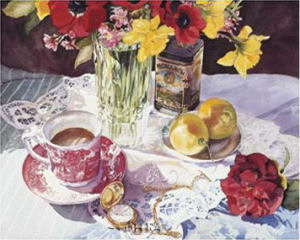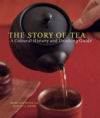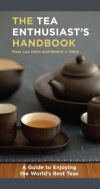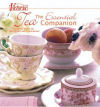
HOME
INTRO
SYMBOLS
ALMANAC
ECONOMY
GEOGRAPHY
STATE MAPS
PEOPLE
FORUM
NEWS
COOL SCHOOLS
STATE QUIZ
STATE LINKS
BOOK STORE
MARKETPLACE
NETSTATE.STORE
NETSTATE.MALL
GUESTBOOK
CONTACT US


South Carolina State Hospitality Beverage

Official state hospitality beverage: Tea
Prints, posters, photographs
South Carolina grown tea was adopted as South Carolina's official hospitality beverage when Governor David Beasley signed House Bill No. 3487 on April 10, 1995
Milk is South Carolina's official beverage.
AN ACT
TO AMEND THE CODE OF LAWS OF SOUTH CAROLINA, 1976, BY ADDING SECTION 1-1-692 SO AS TO DESIGNATE SOUTH CAROLINA GROWN TEA AS THE OFFICIAL HOSPITALITY BEVERAGE OF THE STATE.
Whereas, a member of the Camellia family, Camellia sinensis, most commonly known as tea, is the world's most popular beverage excepting water; and
Whereas, South Carolina is the first place in the United States where tea was grown having been planted in the South Carolina Lowcountry outside of Charleston in 1799 at what is now Middleton Place; and
Whereas, South Carolina contains a unique combination of factors that makes tea production possible; and
Whereas, quality tea was produced successfully by Dr. Charles Shepard at Pinehurst Tea Plantation near Summerville circa 1888 and continued for over twenty-five years; and
Whereas, subsequent to its introduction in America, commercial tea production also was attempted in South Carolina in Greenville, in Georgetown, and in Ravenel; and
Whereas, most recently tea is being produced in the tradition of Dr. Shepard on Wadmalaw Island from plants descended from the tea planted near Summerville over one hundred years ago; and
Whereas, with improved plant horticulture and the invention of unique machinery to harvest the delicate leaves, Mack Fleming and William B. Hall of American Classic Tea are growing, harvesting, drying, grading, and packaging this beverage again on Wadmalaw Island; and
Whereas, it is recognized that tea is unique to South Carolina in that South Carolina is the only state to have ever produced tea commercially, and with the revitalizing of an industry that flourished at the turn of the century, it is appropriate that this beverage be so recognized as the official hospitality beverage of the State. Now, therefore,
Be it enacted by the General Assembly of the State of South Carolina:
Tea designated state hospitality beverage
SECTION 1. The 1976 Code is amended by adding:
"Section 1-1-692. South Carolina grown tea is designated as the official hospitality beverage of the State."
Time effective
SECTION 2. This act takes effect upon approval by the Governor.
Approved the 10th day of April, 1995.
South Carolina Law
The following information was excerpted from the The South Carolina Code of Laws, Title 1, Chapter , Article 9, section 1-1-692.
Title 1 - Administration of the Government
CHAPTER 1. GENERAL PROVISIONS
ARTICLE 9. STATE EMBLEMS, PLEDGE TO STATE FLAG, OFFICIAL OBSERVANCES
SECTION 1-1-692.
SECTION 1-1-692. Official State beverage.
South Carolina grown tea is designated as the official hospitality beverage of the State.
Sources...
State of South Carolina. South Carolina Code of Laws. Columbia: State of South Carolina, 2011. Web. 27 May 2011. .
Shearer, Benjamin F. and Barbara S. State Names, Seals, Flags and Symbols: A Historical Guide Third Edition, Revised and Expanded. Westport, Conn: Greenwood Press, 3 Sub edition, 2001.

Official state hospitality beverage: Tea
Prints, posters, photographs
Additional Information
South Carolina ? History of South Carolina Tea Farms: SCIWAY: South Carolina's Information Highway.
Charleston Tea Plantation: Official website. The Charleston Tea Plantation is located on historic Wadmalaw Island in the heart of the Lowcountry of South Carolina.
American Classic Tea: Article by Sally Bernstein.
Bigelow buys South Carolina tea plantation: 2003 article in USAToday.
State Beverages: Complete list of official state beverages from NETSTATE.COM.
More symbols & emblems: Complete list of official South Carolina state symbols from NETSTATE.COM.

The Story of Tea
The Story of Tea: A Cultural History and Drinking Guide, by Mary Lou Heiss and Robert J. Heiss. 432 pages. Publisher: Ten Speed Press (October 1, 2007) Whether it's a delicate green tea or a bracing Assam black, a cup of tea is a complex brew of art and industry, tradition and revolution, East and West. In this sweeping tour through the world of tea, veteran tea traders Mary Lou Heiss and Robert J. Heiss chronicle tea's influence across the globe and provide a complete reference for choosing, drinking, and enjoying this beverage.
The Story of Tea begins with a journey along the tea trail, from the lush forests of China, where tea cultivation first flourished, to the Buddhist temples of Japan, to the vast tea gardens of India, and beyond. Offering an insider'?s view of all aspects of tea trade, the Heisses examine Camellia sinensis, the tea bush, and show how subtle differences in territory and production contribute to the diversity of color, flavor, and quality in brewed tea. They profile more than thirty essential tea varietals, provide an in depth guide to tasting and brewing, and survey the customs and crafts associated with tea. Sharing the latest research, they discuss tea's health benefits and developments in organic production and fair trade practices. Finally, they present ten sweet and savory recipes, including Savory Chinese Marbled Eggs and Green Tea Pot de Cr?me, and resources for purchasing fine tea.

The Tea
Enthusiast's Handbook
The Tea Enthusiast's Handbook: A Guide to the World's Best Teas, by Mary Lou Heiss and Robert J. Heiss. 208 pages. Publisher: Ten Speed Press; 1 edition (March 30, 2010) Did you know that tea is the most widely consumed beverage on the planet after water? Or that all of the world?s tea originates from only three varieties of a single plant? While a cup of tea may be a simple pleasure for most of us, there are a dizzying number of tastes from which to choose. And every tea, whether a delicately sweet green tea from Japan or a bracing, brisk Darjeeling black, tells a story in the cup about the land that nurtured it and the tea-making skills that transformed it.
In this authoritative guide, veteran tea professionals Mary Lou and Robert J. Heiss provide decades of expertise on understanding tea and its origins, the many ways to buy tea, and how to explore and enjoy the six classes of tea (green, yellow, white, oolong, black, and Pu-erh). Additional advice on steeping the perfect cup and storing tea at home, alongside a gallery of more than thirty-fi ve individual teas with tasting notes and descriptions make The Tea Enthusiast's Handbook a singular source of both practical information and rich detail about this fascinating beverage.

Victoria The Essential Tea Companion: Favorite Menus for Tea Parties and Celebrations, by Kim Waller. 204 pages. Publisher: Hearst (May 5, 2009) Whether we?re enjoying a morning break, a quiet afternoon respite, or a soothing moment at day?s end, tea is a ready indulgence. And Victoria has the ideal accompaniment to this celestial beverage.
Victoria The Essential Tea Companion collects the best of three classic Victoria books in a single completely redesigned and beautiful volume. It serves up history and lore, advice on brewing the perfect pot, notes on collectible china, and best of all, menus for eight themed parties, from a children?s tea to a bridal shower. Here are more than 100 recipes for sandwiches, scones, tarts, cakes, savories, breads, and biscuits, as well as flavored teas both hot and iced, and honeys, spreads, and jams. An authoritative appendix provides the elegant final touch.

